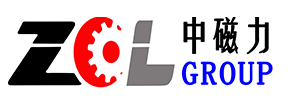## Understanding Slip Ring Motors for Conveyor Systems
Slip ring motors are integral to the efficient operation of conveyor systems across various industries, including manufacturing, mining, and logistics. These motors facilitate continuous rotation and are designed to handle high-torque applications, making them ideal for moving heavy loads.
At the heart of a slip ring motor is the slip ring itself, a component that provides electrical connections between stationary and rotating parts of the motor. This design allows for efficient power transfer to the rotor while maintaining continuous rotation. The slip ring is paired with brushes that maintain electrical contact throughout the motor's operation. When the motor starts, electrical current flows through these rings to energize the rotor, producing a magnetic field that interacts with the stator, leading to torque generation.
Key components of slip ring motors include the rotor, stator, slip rings, and brushes. The rotor is the rotating part that either directly drives the conveyor or is connected to a gearbox for increased torque. The stator houses coils that create a magnetic field when supplied with electrical energy. The slip rings are embedded in the rotor and are critical for providing power without interruption, allowing for smooth operation even at high speeds. The brushes, commonly made of carbon or metal, make contact with the slip rings, ensuring continuous electrical conduction.
Advanced technology in slip ring motors has led to significant improvements in energy efficiency and operational control. Modern slip ring motors are often equipped with variable frequency drives (VFDs), enabling precise speed control and reducing energy consumption during non-peak load periods. This adaptability not only enhances production efficiency but also minimizes wear and tear on machinery, resulting in lower maintenance costs and prolonged equipment lifespan.
In practical application, slip ring motors are widely utilized in industries such as food processing, where they drive conveyors for product transportation, sorting, and packaging. For instance, a slip ring motor in a bottling plant can efficiently handle the movement of filled bottles along the production line, allowing for real-time adjustments to speed based on shifts in production volume.
In conclusion, slip ring motors play a crucial role in modern manufacturing, driving conveyor systems that enhance operational efficiency and productivity. As businesses look for ways to optimize their processes, investing in advanced slip ring motor technology ensures they remain competitive. For more information on how slip ring motors can benefit your operations, contact us, and explore the leading suppliers in the region.
